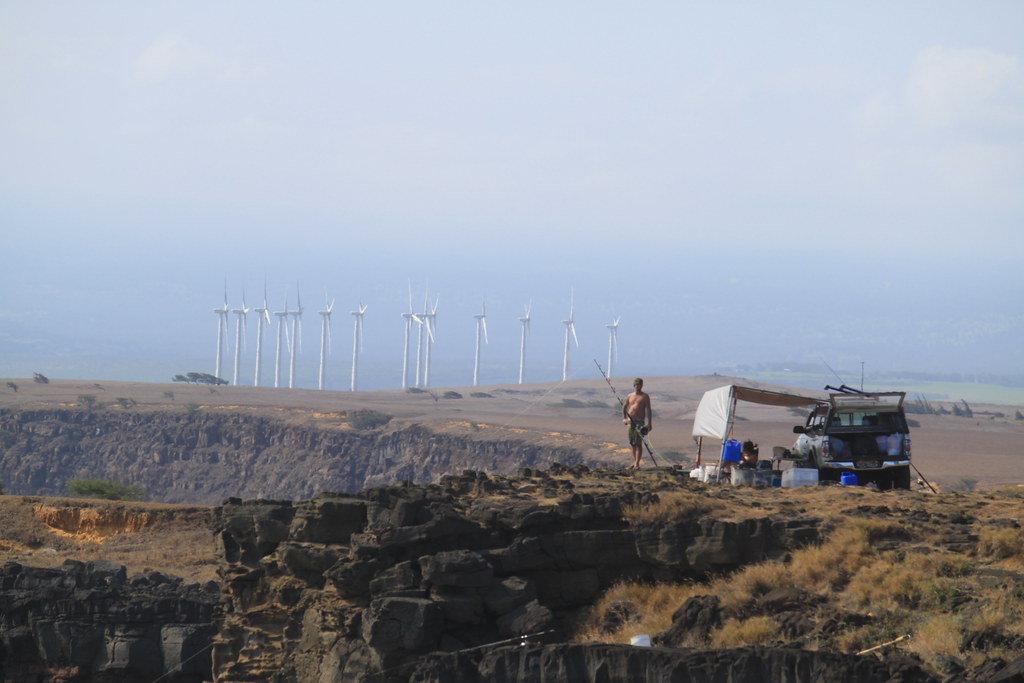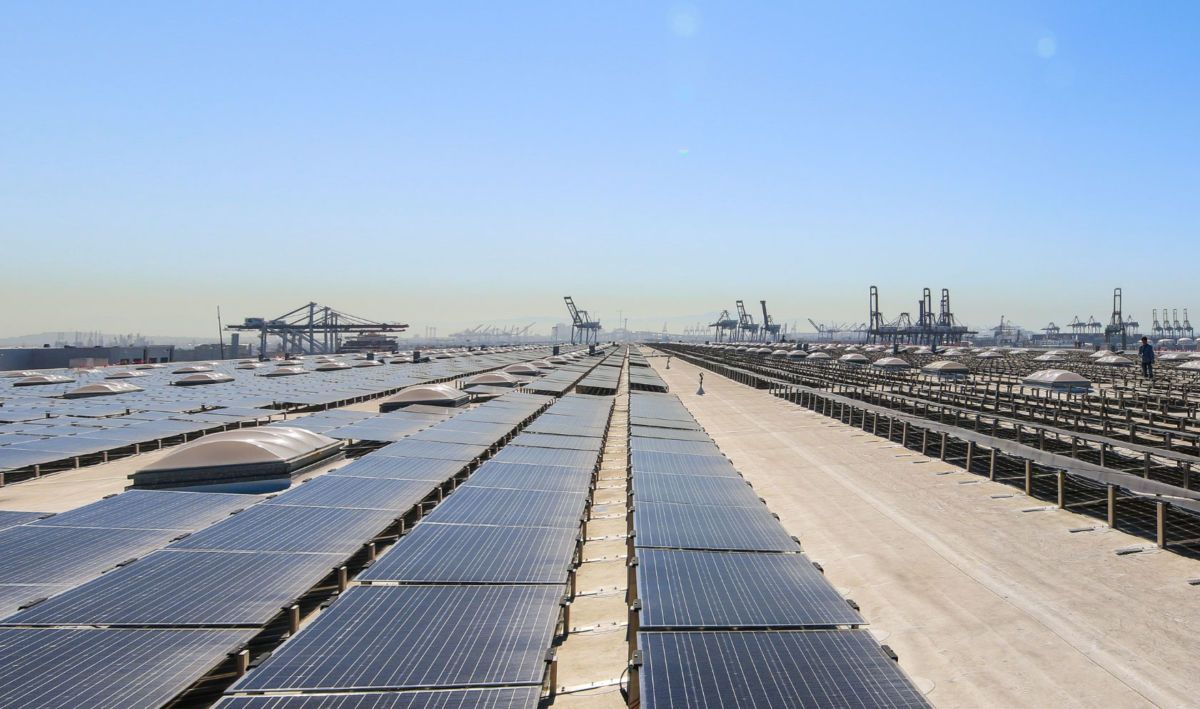Over the past several months, legislators in Washington have engaged in heated conversations about the Green New Deal, the potential plan to help the United States to cool the planet by quickly and equitably curbing greenhouse gas emissions and transitioning to cleaner energy sources.
The hotly debated idea has both vocal supporters and detractors. But even for those who champion the mission, there’s still a lot to figure out about how it would be developed and implemented.
The good news is that any effort to bring the Green New Deal to fruition wouldn’t need to start from scratch. Proponents can, and should, look to states and cities for help and inspiration, says Caitlin McCoy, a fellow at Harvard Law School who specializes in in climate, clean air and energy. McCoy just authored a new policy paper that shows areas where state and local governments have been leading and how understanding their progress is crucial to crafting any new sweeping federal legislation.
“States are an experimental testing ground for policies that could one day be adopted at a federal level,” she says. Green New Deal backers, she adds, “would be wise to do an accounting of what’s happening at a state and local level and see where they might be able to plug federal policies and programs into existing architecture and frameworks. And any big federal policy to operationalize the principles of the Green New Deal would necessarily need to build on state action, because a lot of the areas that the deal seems to be seeking to reach are areas of traditional state and local control.”
Clean Energy Goals
One of the most ambitious goals of the Green New Deal is the sourcing of 100 percent of the country’s power from clean, renewable sources.
States have been working toward this goal for decades — 29 states have renewable portfolio standards that set minimum amounts of electric power that utilities need to get from renewable sources. In fact about half the growth in U.S. renewable electricity generation and capacity over the past two decades can be tied directly to state renewable energy policies, according to McCoy’s paper.
So far these standards have been relatively modest, but that’s beginning to change. In the past year California, Hawaii, New Mexico, Nevada and Washington have committed to 100 percent renewable or 100 percent carbon-free targets.

Other states are considering similar goals, but Illinois may take things even further. State leaders there are currently considering a renewable energy bill that would also address social-justice issues and help communities that have been tied to dirty energy transition to become part of the emerging clean energy economy.
Vox reporter Umair Irfan called this bill’s focus on environmental justice, “a remarkable test case of one of the Green New Deal’s core principles.”
Meanwhile Washington D.C. and more than 100 other U.S. cities are already onboard with similar measures to hit 100 percent carbon-free energy.
There’s good reason to keep an eye on the progress that cities are making, says John Farrell, who directs the Energy Democracy Initiative at the Institute for Local Self-Reliance. Cities have displayed a strong focus on energy programs that aren’t owned or managed by big utility companies. “That keeps more of the energy dollars in our communities — we can now do programs like solar on rooftops rather than just giant power plants,” he says. This emphasis on how wealth creation happens and who gets the economic benefits is a key component of the Green New Deal, he points out.
Farrell says he’s seen a growing number of municipalities consider community-shared solar programs, in which residents can buy into neighborhood solar arrays and receive a credit on their utility bills. Minnesota has been a leader on that front. “It took off in a couple of progressive communities that were climate-change oriented and spread very quickly because it was a great financial deal,” he adds.
Slashing Emissions
There’s local progress on curbing emissions, too.
McCoy calls California a “shining example” of how to reduce emissions from buildings. The state has worked since 1977 to incrementally tighten efficiency standards for buildings and now has an ambitious plan for achieving zero net energy in new construction. “That’s why we see California as really leading the nation in terms of the level of energy efficiency that it demands in new buildings,” she says.
Municipalities around the country have started to catch up to California’s lead. Boulder, Colorado, adopted an ordinance in 2015 requiring energy efficient retrofitting in buildings with a goal of 80 percent reduction in emissions by 2050.
And just this April New York City passed its own Green New Deal, which consists of 10 bills to slash greenhouse gas emissions. The most notable would require buildings larger than 25,000 square feet to reduce emissions by 40 percent by 2030 and 80 percent by 2050. Similarly, the goals of Los Angeles’s own Green New Deal, announced at the beginning of May, include requiring all buildings to be net zero carbon by 2050.
Another opportunity is in boosting state rebate programs for home appliances, water heaters and HVAC systems, says McCoy. State rebate programs were expanded between 2010 and 2014 with help from the American Recovery and Reinvestment Act of 2009. The act allowed states to design their own programs, determine which products would be eligible for rebates, and offer recycling bonuses for replaced items.
Other states have ramped up investment in infrastructure to support electric vehicles. Maryland is using $11 million in settlement money from Volkswagen’s emissions scandal to build more electric vehicle charging stations. Utilities in New York will install more than 1,000 fast chargers in the next seven years.
Minnesota, Virginia and California also have efforts underway. California’s plan requires new homes and townhomes with attached garages to be wired to support electric vehicle charging. Texas has revived an electric vehicle incentive program.
And it’s not just private cars. New York City, Portland and King County, Washington, are working to convert their bus fleets to electric by 2040.
There’s one more area of opportunity: the Clean Power Plan. McCoy’s research highlighted this Obama administration policy, which sought to reduce carbon dioxide emissions from power plants. The plan could be used “as a model and set a nationwide emissions budget with caps tailored for each state,” McCoy writes. “States would then submit compliance plans reflecting their needs and opportunities, informed by their knowledge of their electric systems.”
Unfortunately we haven’t gotten to see yet how well this would work. Efforts to implement the Clean Power Plan have been delayed by the Trump administration, which is seeking to scrap the effort.
All of these areas will be good starting points for federal legislators if they craft a mobilization plan like the Green New Deal. “They would be wise to take note of how states have faced challenges in these efforts and worked to overcome them,” writes McCoy.
Balance of Power
As the stalled Clean Power Plan illustrates, it can be hard to imagine any kind of significant federal environmental action taking place during the Trump administration, which is undoubtedly more intent on rolling back environmental protections than enacting them.
But the Trump era has so far been useful in spurring state and local action to tackle climate change. Farrell says he’s encouraged by all the cities pledging to hit higher renewable energy goals, but there’s still the question of whether they’ll actually get there and how they’ll do it.
“There aren’t that many cities yet who have really successfully wrestled with what that looks like and what policies would need to be put in place,” he says.
And then there’s the issue of whether piecemeal state and local efforts will be enough to help compensate for the leadership vacuum at the federal level. Right now, the answer is likely no, according to a recent Harvard Law policy paper by third-year student Michelle Melton. She’s a former fellow working on climate policy for the Center for Strategic and International Studies.
But there’s still reason for hope. “A growing number of states that make up a large portion of the U.S. economy have committed to climate mitigation by employing a wide range of policies, even if these policies are incremental, piecemeal, or experimental,” Melton writes.
Farrell says the cumulative population of the cities and states that have made these commitments already represent a significant portion of the country, but there’s still a huge role for the federal government to play when it comes to providing financial incentives for investment in clean technology or tax credits to level the playing field.
“I think what cities can do is pretty impressive, especially if they own their own utilities, but there’s a limit to how much they can accomplish unless the rules are changed to allow them to go further,” says Farrell. “In terms of solving the climate crisis, it can’t just be 200 cities that have volunteered to do something around renewable energy. It really needs to be all of us.”
We’re not backing down in the face of Trump’s threats.
As Donald Trump is inaugurated a second time, independent media organizations are faced with urgent mandates: Tell the truth more loudly than ever before. Do that work even as our standard modes of distribution (such as social media platforms) are being manipulated and curtailed by forces of fascist repression and ruthless capitalism. Do that work even as journalism and journalists face targeted attacks, including from the government itself. And do that work in community, never forgetting that we’re not shouting into a faceless void – we’re reaching out to real people amid a life-threatening political climate.
Our task is formidable, and it requires us to ground ourselves in our principles, remind ourselves of our utility, dig in and commit.
As a dizzying number of corporate news organizations – either through need or greed – rush to implement new ways to further monetize their content, and others acquiesce to Trump’s wishes, now is a time for movement media-makers to double down on community-first models.
At Truthout, we are reaffirming our commitments on this front: We won’t run ads or have a paywall because we believe that everyone should have access to information, and that access should exist without barriers and free of distractions from craven corporate interests. We recognize the implications for democracy when information-seekers click a link only to find the article trapped behind a paywall or buried on a page with dozens of invasive ads. The laws of capitalism dictate an unending increase in monetization, and much of the media simply follows those laws. Truthout and many of our peers are dedicating ourselves to following other paths – a commitment which feels vital in a moment when corporations are evermore overtly embedded in government.
Over 80 percent of Truthout‘s funding comes from small individual donations from our community of readers, and the remaining 20 percent comes from a handful of social justice-oriented foundations. Over a third of our total budget is supported by recurring monthly donors, many of whom give because they want to help us keep Truthout barrier-free for everyone.
You can help by giving today. Whether you can make a small monthly donation or a larger gift, Truthout only works with your support.
